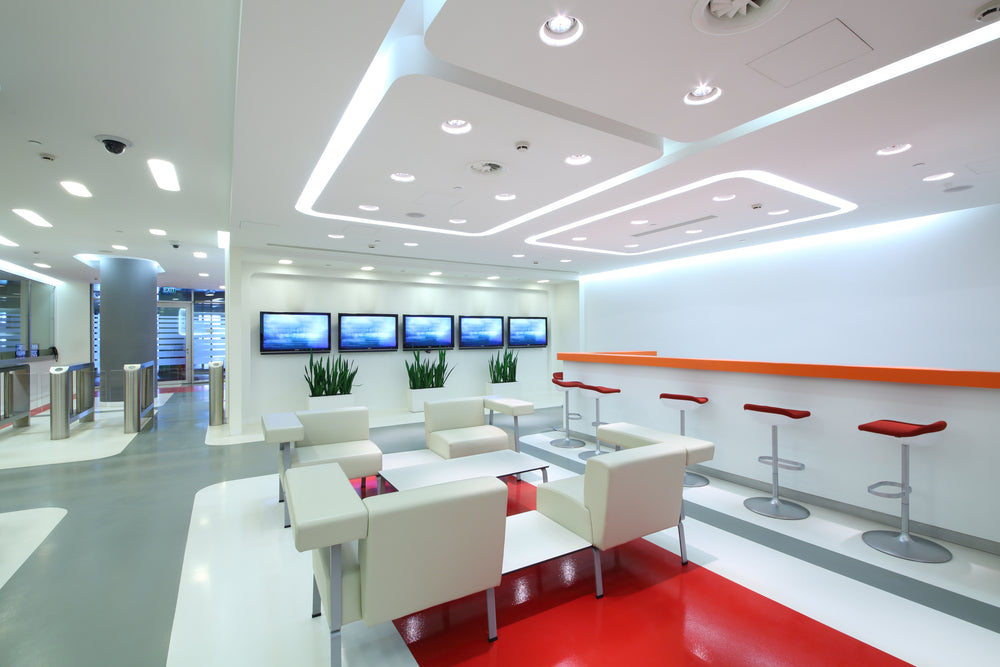There are a few important themes to be considering while designing any kind of office setup, and one of the most important for any office and industry type is lighting. From keeping employees safe and free of hazards to providing ideal working conditions and several related areas, lighting is a vital piece of the puzzle when you're setting up any office.
At Urban 9-5, we're happy to offer several eye-catching, vintage lamps and other lighting formats that help complement many offices. We assist clients with several different themes when it comes to lighting setup, from sticking within their budget to achieving their top lighting goals. What are some of the most important concepts to consider as you're choosing lighting formats and items for any office space? Here are several.
Legal Lighting Standards
First and foremost, did you realize that there are basic lighting standards considered throughout various workplaces and offices? It's true, and these are based on guidelines from a couple different groups:
- GSA: The US General Services Administration requires different illumination levels depending on the nature of the work environment.
- OSHA: The Occupational Safety and Health Administration has their own specific lighting requirements, though they do defer to the GSA in some cases.
Within both these areas, and commonly heard during lighting conversations, is an interesting term: "Foot-candles." A foot-candle refers to the amount of illumination that one candle could produce on one square foot of surface that was a foot away; this standard can be used for many different light sources.
According to these standards, office lighting should maintain a level of 30-50 foot-candles, with the majority of workspaces clocking in at 40 foot-candles. If you're not sure how to measure this, no problem - an easy way is to simply use a light meter.
Light meters are handheld devices that measure light in a specific area, and they'll give you an accurate reading of foot-candles in any space. This is helpful to know so that you can adjust your office's lighting as needed, and also to be aware of potential problems or issues.
Considering Multiple Lighting Formats
As you've likely already considered during your lighting search, there are a few different forms of lighting that are important for most office spaces. These include:
- Overall space lighting: Typically referring to ceiling lights and floor lamps, this type of lighting is designed to provide a general light source for the entire room or office.
- Task lighting: This form of lighting is meant to help with specific tasks that need to be completed, and it's usually in the form of desk lamps or other smaller lamps.
- Accent lighting: Accent lighting is used to highlight certain areas, objects, or artwork within an office - it's usually a bit more decorative than task or space lighting.
- Natural lighting: Finally, while it's not "purchased" in the same way as other light fixtures, natural lighting from windows and skylights is important to consider.
Depending on the needs of your office and employees, you may want to focus more on one area than another - but it's important to have all these types of lighting available in some capacity.
Health and Productivity Considerations
Light and various light fixtures can make a major impact on the health and productivity of employees within an office. For example, certain types of flickering or fluorescent light can cause headaches, eye strain, and other issues.
On the flip side, good lighting can actually help people stay more alert and improve their mood. The right mix of light can also help with seasonal affective disorder, or SAD - a type of depression that's common during winter months when there's less natural light.
When you're considering lighting for an office, think about how different types of light may affect employees. You can also talk to your team and get their feedback on what kinds of lighting they prefer - this can be helpful in making a decision.
Computers and Lighting
When it comes to lighting that will be placed near or around computers, it's important to take a few special considerations into account. First, computer screens give off what's known as blue light - a type of light that can be harmful to eyesight if too much is exposure.
For this reason, it's important to have task lighting that doesn't point directly at computer screens. You may also want to consider using computer glasses that help filter out blue light, and to take breaks from staring at screens regularly.
In addition, it's important to consider any potential electrical or other hazards that could be created by placing certain types of light near computers. For example, halogen lamps give off a lot of heat and should be kept at least three feet away from any computer equipment.
When in doubt, it's always best to consult with an electrician or other professional to get their opinion on how to safely set up lighting near computers.
Energy and Sustainability
Finally, in today's day and age, it's important to consider energy efficiency and sustainability when choosing office lighting. There are a number of ways to make sure your office's lighting is as sustainable as possible, including the use of LED bulbs where possible.
You may also want to consider using natural light as much as possible, and to install dimmers or other energy-saving features on light fixtures. By taking these steps, you can help create a more sustainable and eco-friendly office environment.
For more on some important office lighting concepts to be thinking about as you choose lighting fixtures, or to learn about any of our industrial office furniture products, speak to the pros at Urban 9-5 today.
